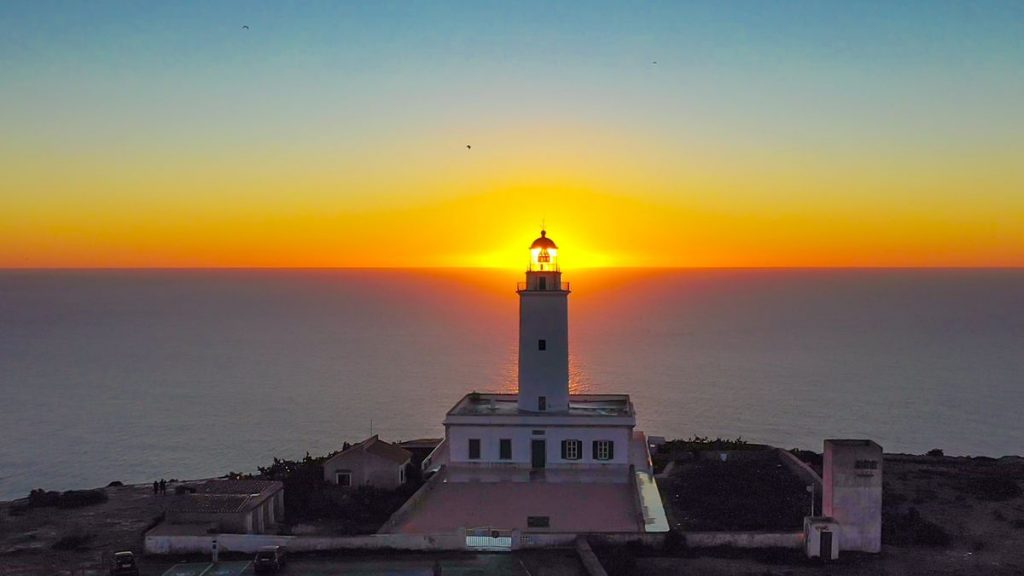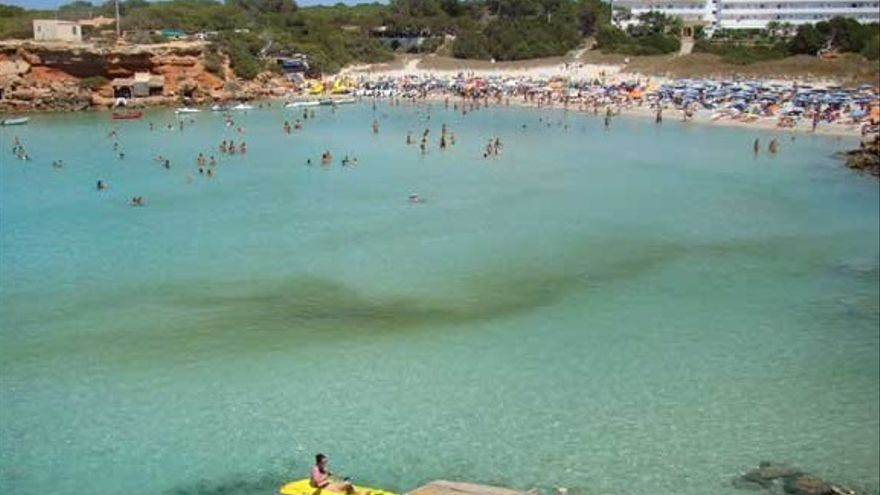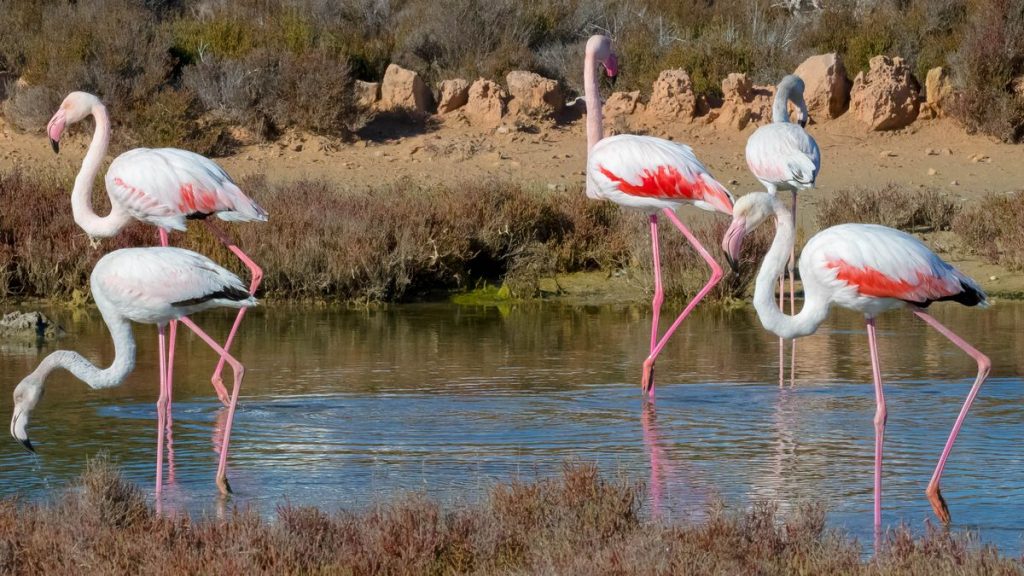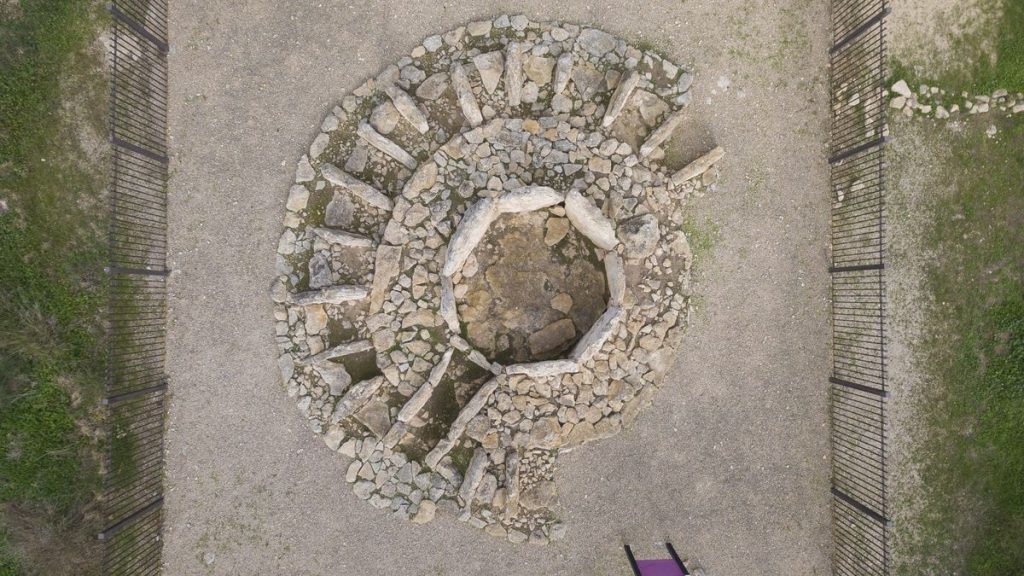Formentera is the smallest inhabited island of the Balearic Islands and one of the most beautiful, it is known worldwide for its crystal clear waters and its relaxed or “slow” way of life. It can only be reached by sea from neighbouring Ibiza. Connecting ferries sail continuously from Ibiza and the journey is very short, around 30 minutes. On the ferries it’s possible to take a car, motorbike or bicycle, although they can also be rented in Formentera. In the port, La Savina, you will find many car hire companies. (Here you will find all the ferry services to Formentera from Ibiza).
One day is enough to get to know the most iconic spots on the island, although you can also extend your stay to get the most out of it and discover more unknown corners of Formentera (like the unmissable Ibiza hippy markets).
What to visit in a day in Formentera
The Mola Lighthouse
This lighthouse is located at the island’s highest point, right on the edge of a cliff over 100 metres high, at the eastern end of Formentera. Thanks to the views on offer, it has become one of the most visited spots on Formentera, and also one of the most photographed by tourists. It sits 120 metres above the water, just above the cliff, and its lamp rises to 142 metres. It first began to shine out from the heights on 30th November 1861, after an investment of more than 275,000 reales. It was built to a design by Emili Pou, a Mallorcan engineer who also laid out the port of Ibiza and many other lighthouses along the Balearic coast. From here there are spectacular views of the Mediterranean.
Nowadays you can go into the lighthouse as the facilities have been converted into a cultural centre.
Location of La Mola Lighthouse here.

Faro de la Mola Gerardo Ferrero
Cala Saona beach
This beach is located in a small bay hidden between cliffs, you can enjoy water sports and a good swim. In addition, the sunset from this cove is magical and highly recommended. The fact that it is surrounded by cliffs perfectly frames the most beautiful moment of the day, as they turn reddish as the sun descends over the horizon.
 Cala Saona
Cala Saona
Ses Salines Natural Park
This is located between the two Pitiusa islands, Ibiza and Formentera, from the southern part of Ibiza to the north of Formentera, as well as the sea in between. The Park has 2,838.44 hectares of land and more than 13,000 hectares of sea, equivalent to 75% of the protected area.
This represents an example of the richness of Mediterranean biodiversity. Its uniqueness lies in the fact that it is a resting and nesting area for birds on their migrations. As a natural area of special interest it includes a range of terrestrial and marine habitats, with internationally recognised ecological, landscape, historical and cultural features of the highest order.
We recommend swimming in its crystal clear waters and strolling among its lagoons. Remember to respect the environment: do not litter and follow the recommendations indicated on the signs. The beaches of the Natural Park, such as ses Illetes and Llevant, are true paradises.
 Flamingos in Ses Salines Natural Park Gerardo Ferrero
Flamingos in Ses Salines Natural Park Gerardo Ferrero
Megalithic tomb of Ca na Costa
To give your visit a historical touch, we recommend this archaeological site, one of the most spectacular in the Balearic Islands among similar burial structures. In addition, its location makes it one of the most visited tourist attractions, as it is located between the Estany Pudent lagoon and the village of es Pujols, two other places you cannot miss when visiting Formentera.
The megalithic tomb of Ca na Costa has a passageway that was covered with a low ceiling making it necessary to crawl inside and which, at just over 2 metres long, leads to a central circular enclosure with a limestone floor almost 4 metres wide. This interior space is surrounded by 7 huge, uncarved orthostats about 2 meters across and between 30 and 40 cm thick, vertically embedded in the floor’s stone base. Judging by the two concentric and retaining stone platforms that surround the monument, joined by 24 other large vertical slabs arranged symmetrically and radially as buttresses, it is reasonable to believe that such a powerful structure could only have been intended to support the weight of the huge stone covering the enclosure. This complexity of its structure is what is most surprising given its unmistakable symbolic cultural and religious ‘features’.
Location of the site here.

The site of Ca na Costa Alfredo Montero
The village of Sant Francesc
This is one of the most interesting little villages on Formentera and is full of shops, bars and restaurants where you can stop along your way and do some shopping. You can also visit the church in the square. The austere nature of the church is due to the fact that the building was intended as a defensive fortress, as well as a religious temple, at a time when the piracy was still very present. Its iron-plated door should be highlighted. The church was completed in 1738 and is found opposite the Consell Insular (Island Council).
Near Sant Francesc Xavier, we find the mills of sa Mirada or sa Miranda.
Location of San Francisco here.
Lose yourself!
Being a small island, 83 square kilometres, the ideal thing to do is to get lost on Formentera. Enjoy its rural roads, bathe in the crystal clear waters of its beaches and coves, stroll through its small villages and switch off from everyday life’s obligations.
Whether by car, motorbike or bicycle, you will discover that Formentera is captivating and that, even if you get to know it well, you will always want to come back.

